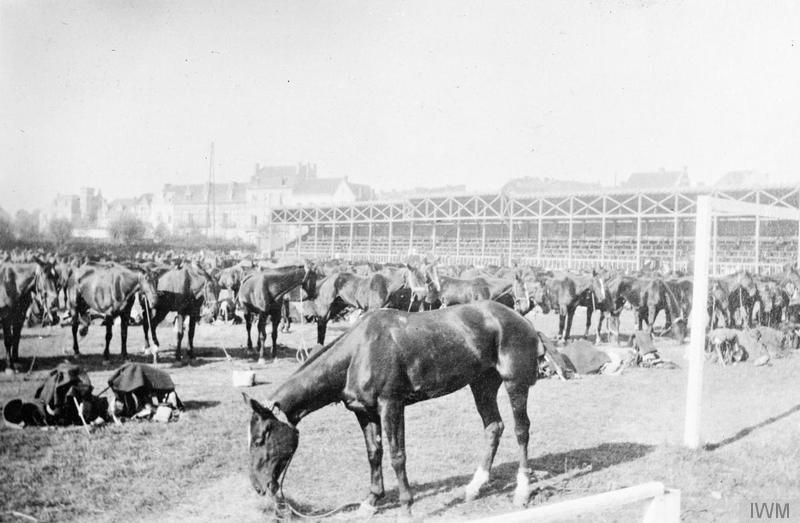|
102nd Light Anti-Aircraft Regiment, Royal Artillery
The 102nd Light Anti-Aircraft Regiment, Royal Artillery, (102nd LAA Rgt) was an air defence unit of the British Army during World War II. Initially raised as an infantry battalion of the Lincolnshire Regiment in 1940, it transferred to the Royal Artillery in 1941. It served with I Corps in the campaign in North West Europe, at times acting as infantry or administrative troops when the threat of air attack had diminished. It was disbanded after the war. 7th Battalion, Lincolnshire Regiment The unit was originally formed in July 1940 at Tollerton Park, near Nottingham as 7th Battalion, Lincolnshire Regiment, as part of the rapid expansion of the Army with wartime conscripts.Frederick, p. 226. On 10 October, the battalion joined 205th Independent Infantry Brigade (Home), which was being organised by No 5 Infantry Training Group as a static defence formation. Initially it came under 1st Infantry Division, then North Midland Area, until Lincolnshire County Division was formed in ... [...More Info...] [...Related Items...] OR: [Wikipedia] [Google] [Baidu] |
102nd (Northumberland Hussars) Light Anti-Aircraft/Anti-Tank Regiment, Royal Artillery
The Northumberland Hussars was a Yeomanry regiment of the British Army, transferred to the Royal Artillery for the duration of the Second World War. It was disbanded as an independent Army Reserve (United Kingdom), Territorial Army unit in 1967, a time when the strength of the Territorial Army was greatly reduced. The regiment's name lives on in the title of the command and support squadron of the Queen's Own Yeomanry (QOY), a Formation Reconnaissance Regiment based in Newcastle upon Tyne. History Formation and early history In 1794, King George III of the United Kingdom, George III was on the throne, William Pitt the Younger was Prime Minister of Great Britain and, across the Channel, Britain was faced by a French nation that had recently guillotined its King and possessed a revolutionary army numbering half a million men. The Prime Minister proposed that the Counties form a force of Volunteer Yeoman Cavalry that could be called upon by the King to defend the country against inv ... [...More Info...] [...Related Items...] OR: [Wikipedia] [Google] [Baidu] |
Lincolnshire
Lincolnshire (abbreviated Lincs.) is a county in the East Midlands of England, with a long coastline on the North Sea to the east. It borders Norfolk to the south-east, Cambridgeshire to the south, Rutland to the south-west, Leicestershire and Nottinghamshire to the west, South Yorkshire to the north-west, and the East Riding of Yorkshire to the north. It also borders Northamptonshire in the south for just , England's shortest county boundary. The county town is Lincoln, where the county council is also based. The ceremonial county of Lincolnshire consists of the non-metropolitan county of Lincolnshire and the area covered by the unitary authorities of North Lincolnshire and North East Lincolnshire. Part of the ceremonial county is in the Yorkshire and the Humber region of England, and most is in the East Midlands region. The county is the second-largest of the English ceremonial counties and one that is predominantly agricultural in land use. The county is fourth-larg ... [...More Info...] [...Related Items...] OR: [Wikipedia] [Google] [Baidu] |
Focke-Wulf Fw 190
The Focke-Wulf Fw 190, nicknamed ''Würger'' (" Shrike") is a German single-seat, single-engine fighter aircraft designed by Kurt Tank at Focke-Wulf in the late 1930s and widely used during World War II. Along with its well-known counterpart, the Messerschmitt Bf 109, the Fw 190 became the backbone of the (Fighter Force) of the . The twin-row BMW 801 radial engine that powered most operational versions enabled the Fw 190 to lift larger loads than the Bf 109, allowing its use as a day fighter, fighter-bomber, ground-attack aircraft and to a lesser degree, night fighter. The Fw 190A started flying operationally over France in August 1941 and quickly proved superior in all but turn radius to the Spitfire Mk. V, the main front-line fighter of the Royal Air Force (RAF), particularly at low and medium altitudes. The 190 maintained superiority over Allied fighters until the introduction of the improved Spitfire Mk. IX. In November/December 1942, the Fw 190 made its air combat ... [...More Info...] [...Related Items...] OR: [Wikipedia] [Google] [Baidu] |
Messerschmitt Bf 109
The Messerschmitt Bf 109 is a German World War II fighter aircraft that was, along with the Focke-Wulf Fw 190, the backbone of the Luftwaffe's fighter force. The Bf 109 first saw operational service in 1937 during the Spanish Civil War and was still in service at the end of World War II in 1945. It was one of the most advanced fighters when it first appeared, with an all-metal monocoque construction, a closed canopy, and retractable landing gear. It was powered by a liquid-cooled, inverted-V12 aero engine. It was called the Me 109 by Allied aircrew and some German aces, even though this was not the official German designation. It was designed by Willy Messerschmitt and Robert Lusser who worked at Bayerische Flugzeugwerke during the early to mid-1930s. It was conceived as an interceptor, although later models were developed to fulfill multiple tasks, serving as bomber escort, fighter-bomber, day-, night-, all-weather fighter, ground-attack aircraft, and reconnaissance ... [...More Info...] [...Related Items...] OR: [Wikipedia] [Google] [Baidu] |

.jpg)
